OCTOBER 27, 2022 : Today we had a Memorial Day – running from one memorial to another.
The day started as usual, with Mark going to morning prayers. In Thessaloniki, there is only one synagogue that has daily services – the Yad Lezikaron synagogue. The synagogue is on the ground floor and one floor up in the same building are the offices of the Thessaloniki Jewish Community. This is a blanket organization that oversees the community’s institutions – the synagogues, the schools, the cemeteries, the old age home, etc. If you do not carry anything on Shabbat (in other words, you cannot bring a passport to shul), in order to go to Shabbat services, you must first register with this organization – they keep a photo of your passport, and only then can you enter the synagogue.

With that taken care of, we went to start our day at the Jewish Museum of Thessaloniki.
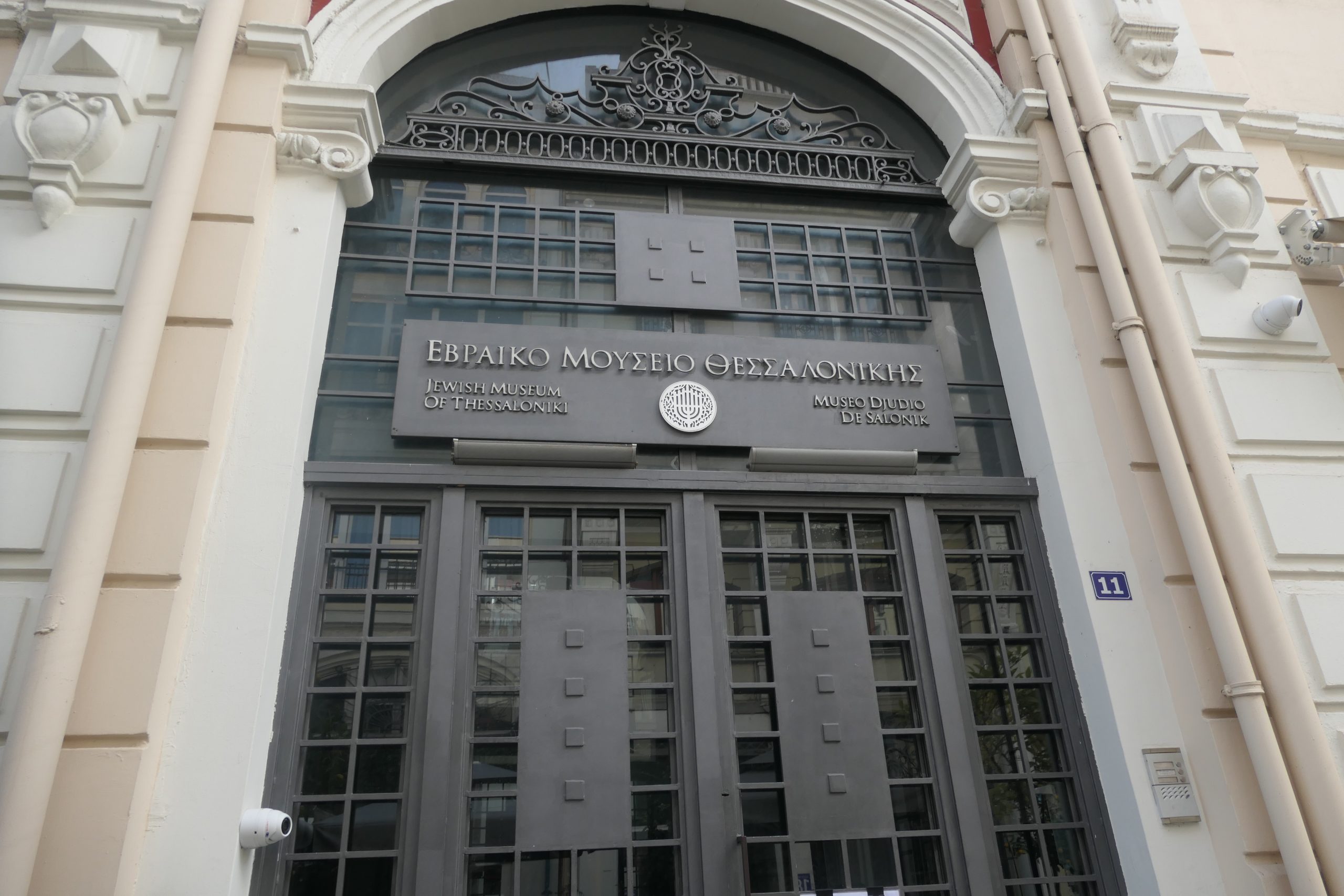
Although small, it displays lots of information and much can be learned. The museum was full – there were several groups of Israelis, and even one group of German tourists. All signage is in both Greek and English. Hebrew translations were sometimes printed and taped alongside. The museum is divided into several rooms, and each room has a theme. Some highlights included:
The first exhibition room is dedicated to the Old Cemetery of Thessaloniki. This was the largest Jewish cemetery in the world, with almost 500,000 graves. It was started in the late 15th century by the Jews that had fled the expulsion from Spain. In December 1942, the cemetery was destroyed during the Nazi occupation. The headstones were used as construction material for various buildings projects in the city. The land that the cemetery had been on was given to the municipality, who then used it to build a hospital and a university. In 2014, Aristotle University commemorated the history of their location, by erecting a memorial to the cemetery that once was there. In the Jewish Museum, you learn the story of this cemetery and can see some headstones originally from the cemetery that were rescued from various places around the city.
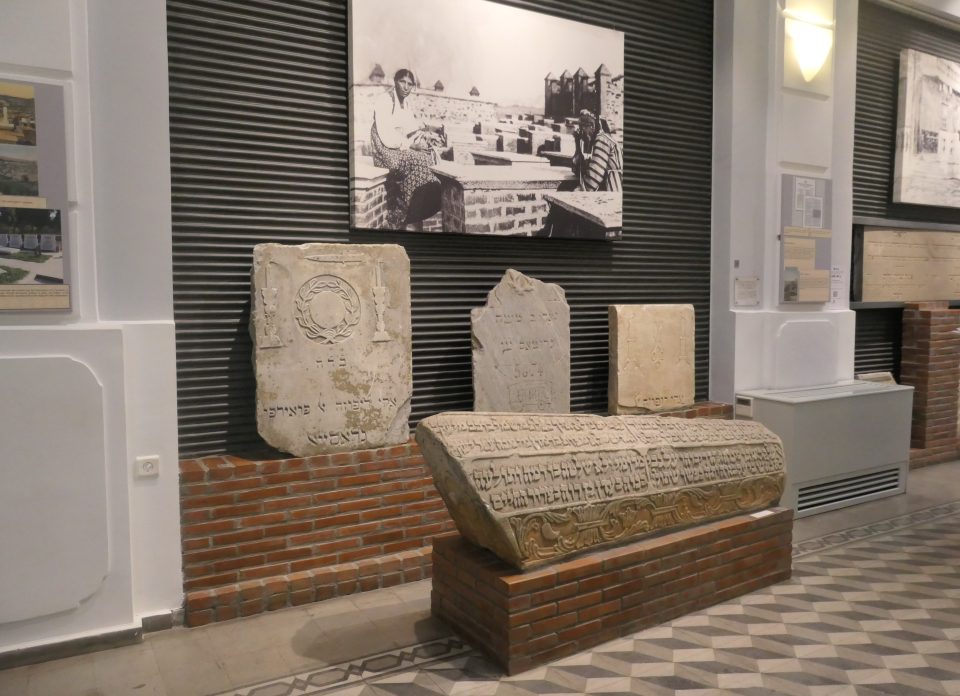
Another room in the museum is a memorial to the Holocaust in Thessaloniki. On both sides of the long room are plaques with the names of the Jews from the city who were killed in the Holocaust. Thousands of names are known and displayed. The exhibit is a work in progress, adding new names as they become known.

Also as part of this exhibit, is a movie about Ovadia Baruch. He was born in Thessaloniki, survived the war and eventually made his home in Israel. He returned to Thessaloniki with a film crew to tell his story. He was the only survivor from a large family (he lost his parents and six sisters) and in the movie he tells what it was like to grow up in Thessaloniki (after school I would climb the mulberry tree and eat the berries, on the way down I would always rip my pants, my mother would complain how I could not keep a pair of pants whole for a full day), how life changed under the Germans, about the deportation to Auschwitz (seven days squished in a cattle car without food or water) and the various labor camps he was in, and how he survived (pretending to be a mechanic and getting transferred to a factory – better to be whipped for doing a bad job – he knew nothing about being a mechanic – than being killed in the camp. It was a very moving tribute to how one ordinary family, one of the many thousands of families, was destroyed and how it is possible to find love in the worst of places. The film is available on YouTube:
In another room, there was an exhibit about the many different Jewish communities within the city. At first, when the Jews came to Thessaloniki, they stayed together with other Jews who had arrived from the same place. Each community had its own synagogue (usually named after where they came from), its own school, own burial society, etc. At one point there were over 30 separate Jewish communities within the city. It was only in the late 1600s that a unified Jewish community first evolved.
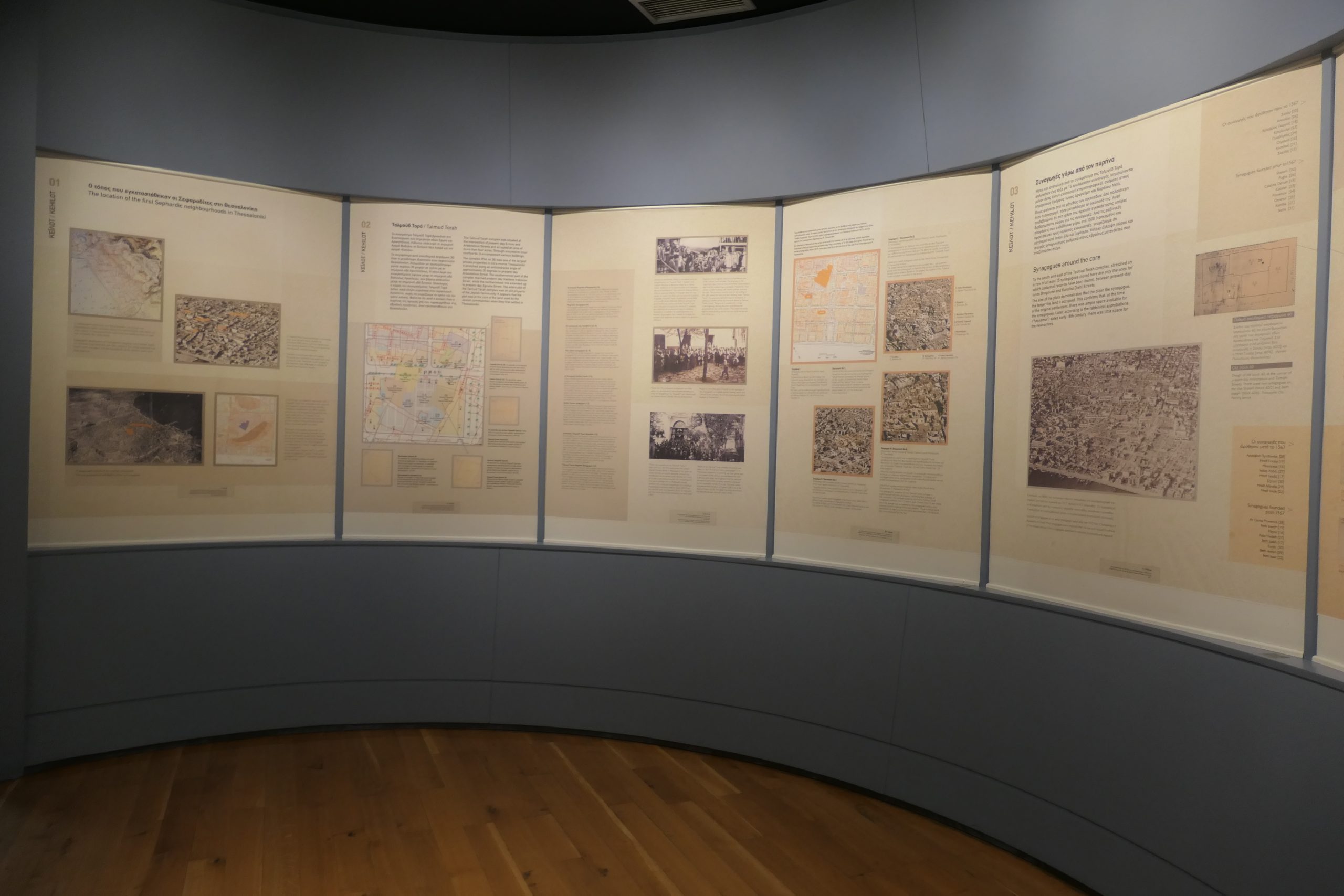
Another room was dedicated to describing different aspect of Jewish life in Thessaloniki between the two World Wars. For me, one panel stood out. It described that in 1933, Yom Kippur was designated a Thessaloniki public holiday. Understanding the difference between the feeling of Yom Kippur in America, where the day can go by unnoticed and seeing it practiced in Israel, where it is a national holiday and the whole country literally stops, made me really feel the strength of the Jewish community in Thessaloniki, that could create a day like Yom Kippur in Israel.
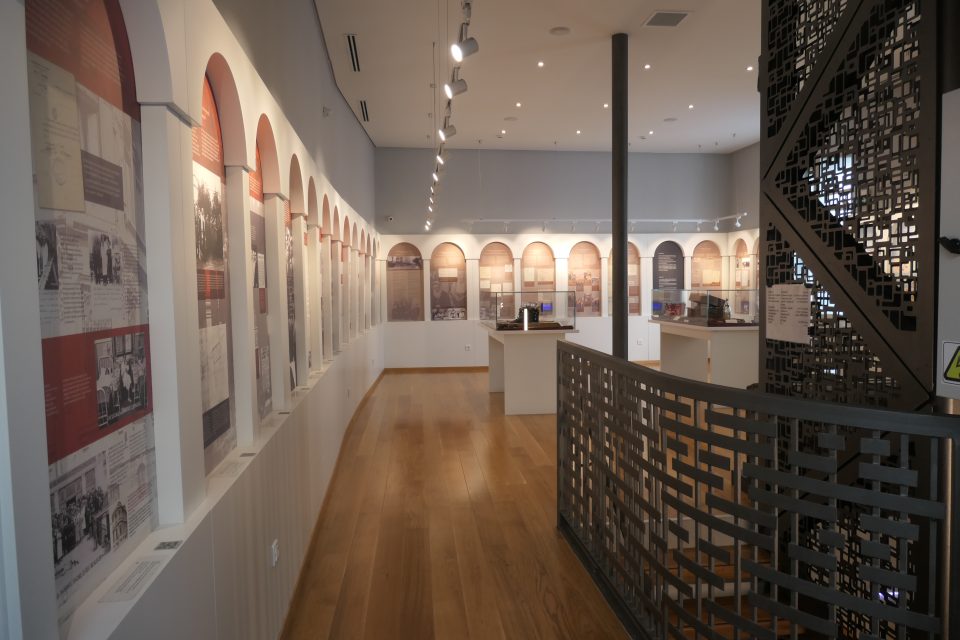
Other exhibits included an exhibit about the Jewish communities northeast of Thessaloniki (where we will be traveling to on Sunday). Their experience in WW II was a bit different, they were under Bulgarian rule – but unfortunately the outcome was the same. Another room was devoted to the children of Thessaloniki. Between 1937 and 1943, over 5000 Jewish children were born in the city. At the end of the war, only 35 of those remained alive. An additional exhibit was dedicated to Greek Jewish music. There is an ongoing project attempting to save the tunes that are quickly fading from memory.
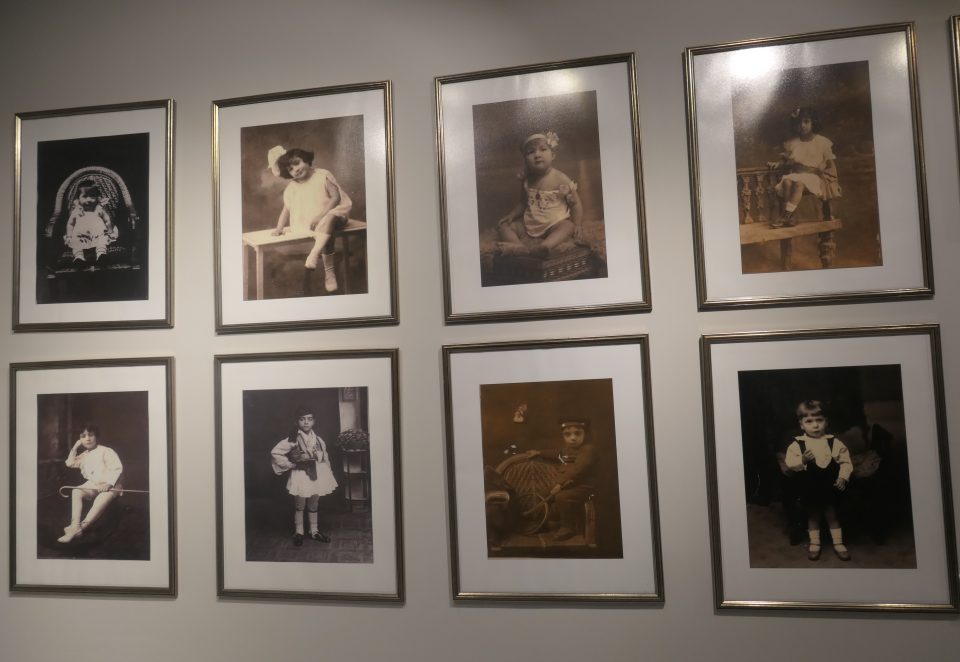
We could have spent more and more time there, but some of the other places we wanted to visit would close soon. It was time to move on. In conclusion, the Jewish Museum of Thessaloniki is a very worthwhile place to visit.
From the museum, we walked the short distance to the Monastir synagogue. At the start of World War II, there were 32 synagogues in Thessaloniki. Now there are only two – the Yad Lezikaron synagogue and the Monastir synagogue. The Monastir synagogue is the only synagogue in Thessaloniki that was not damaged during World War II, since it served as a warehouse for the Red Cross. Today it is used primarily for holiday services. It was constructed in 1925-1927 and funded by the Jews from Monastir in the Kingdom of Yugoslavia. It is the last synagogue in Thessaloniki to bear in its name the place of origin of the congregation members.
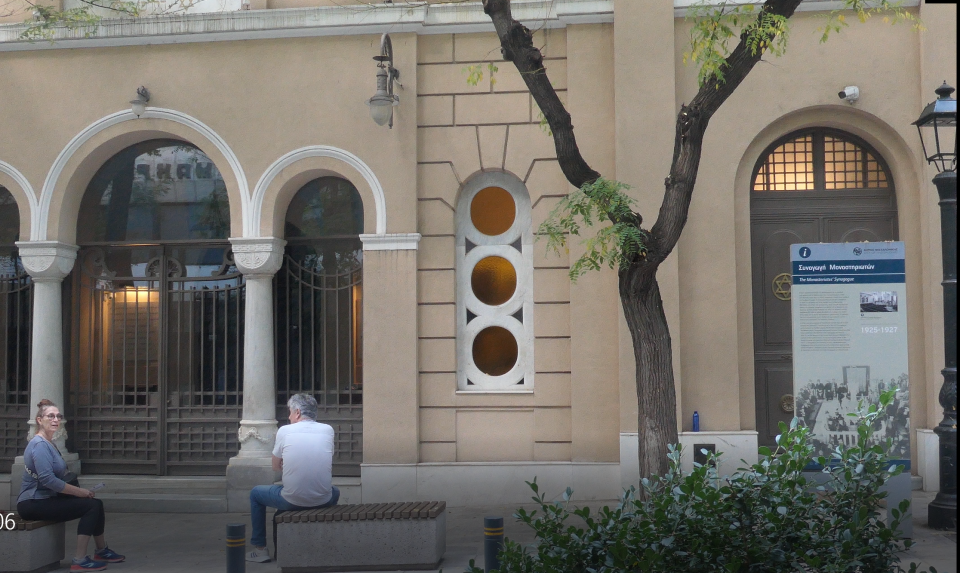
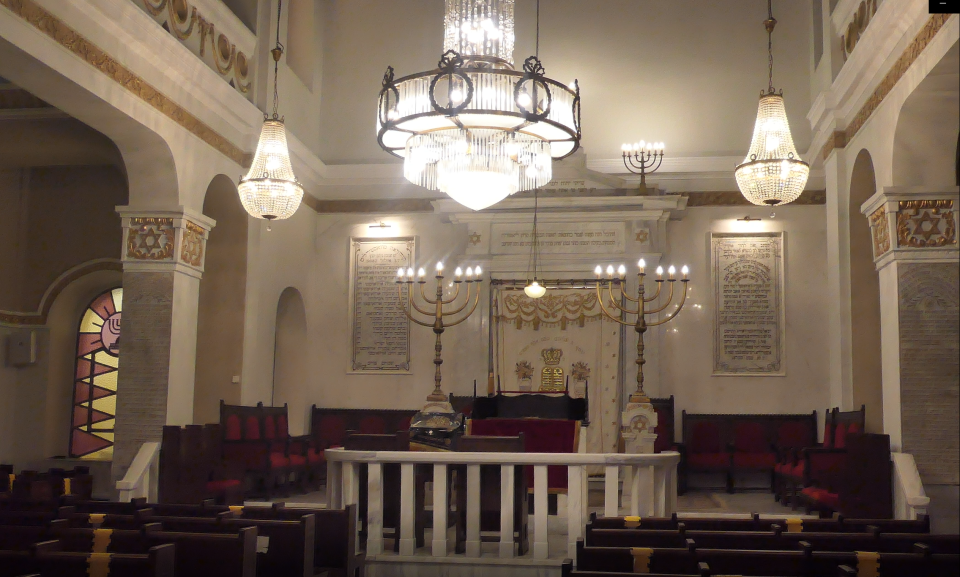
It was time to move on to our next destination. We hailed a taxi and drove about five kilometers out of the center of the city to the New Jewish Cemetery – the cemetery that has been in use since 1937. The front gates were locked, but there was a small open side door, and we walked in. Three older Greek men starting yelling at us in Greek – we understood that we were not supposed to be there. We asked to see the cemetery – they did not speak English – but eventually we understood that we could go in but NO PHOTOS. Over and over, they gestured that you are not allowed to take pictures. This was very unfortunate because the cemetery was fascinating. Luckily, I found some photos on the internet that I can use here instead.
First, the cemetery had two large memorials. The first was for the victims of the Holocaust from Thessaloniki.
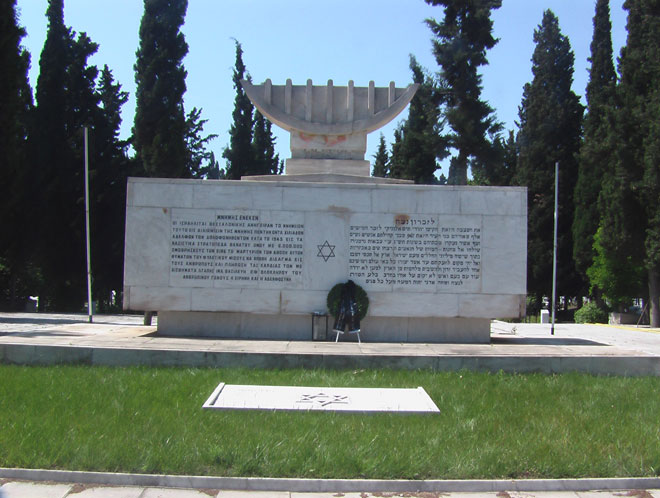
The other was for the Jewish soldiers who died during the World War II. 12,898 Jews served in the Greek armed forces (343 officers among them). Their losses mounted to 513 dead and 3,743 wounded.

As we walked around, one of the older caretakers followed. Mark did not even dare to take out his phone to verify the GPS location for our Wandering Jew app.
In addition to the two memorials, the cemetery has about 1200 graves. They are all uniformly designed as large rectangular slabs above ground. There were some older graves and others were very recent. Some of the old graves were so worn that the writing on them was no longer easily readable.

There were also several areas of the cemetery displaying tombstones. When an ancient tombstone from the old cemetery is discovered in the city, the tombstones is brought here. They respectfully lay them down, but with no grave beneath. Rarely do you see a full tombstone, usually it is just a large slab with Hebrew writing that identifies it as a tombstone.
As we were leaving, we saw a sign that said that photos are only allowed with the permission of the Jewish Community organization. Too bad we had not known that earlier, Mark had been in their offices in the morning.
The caretaker who followed our wanderings in the cemetery, pointed us to the sinks. He would not let us leave the cemetery without us washing our hands, as in the Jewish tradition. He knew all the rules.
From the cemetery, we decided to go to the Upper Town. Most of what we visited up to now had been the Lower Town, close to the waterfront. Inland and up the hill is the older Upper Town, partially encircled by the old city walls. On the northeast corner of the walls, is the Trigonio Tower, with an awesome view over the city. This was our next destination.
Although we were warned about the taxi drivers, that they try to cheat you, this was our third taxi ride and we found the exact opposite. The drivers were courteous, spoke some English and drove the shortest route according to Google Maps. So far, all good.
We entered the city walls and climbed the tower.
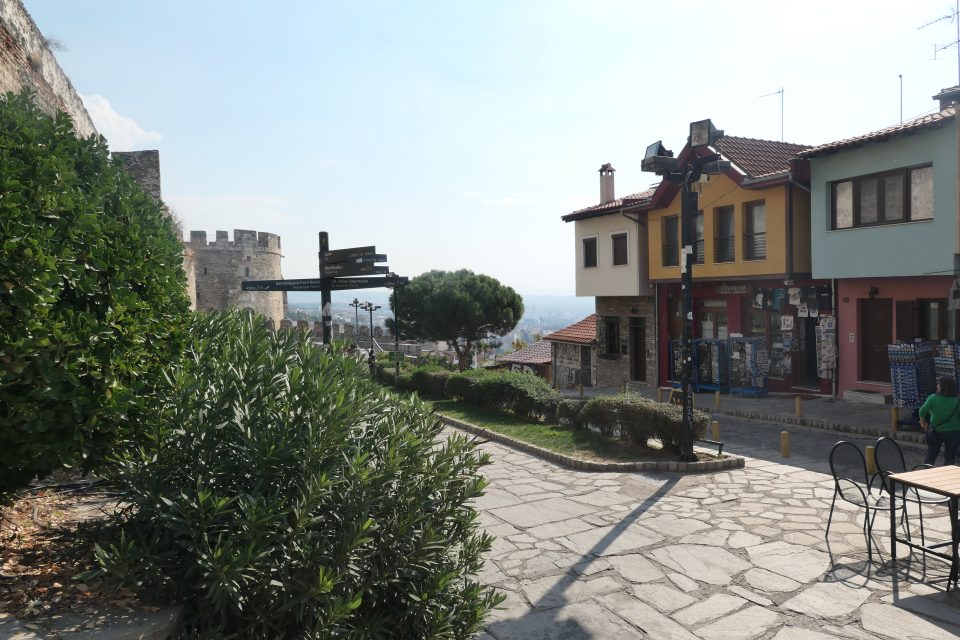
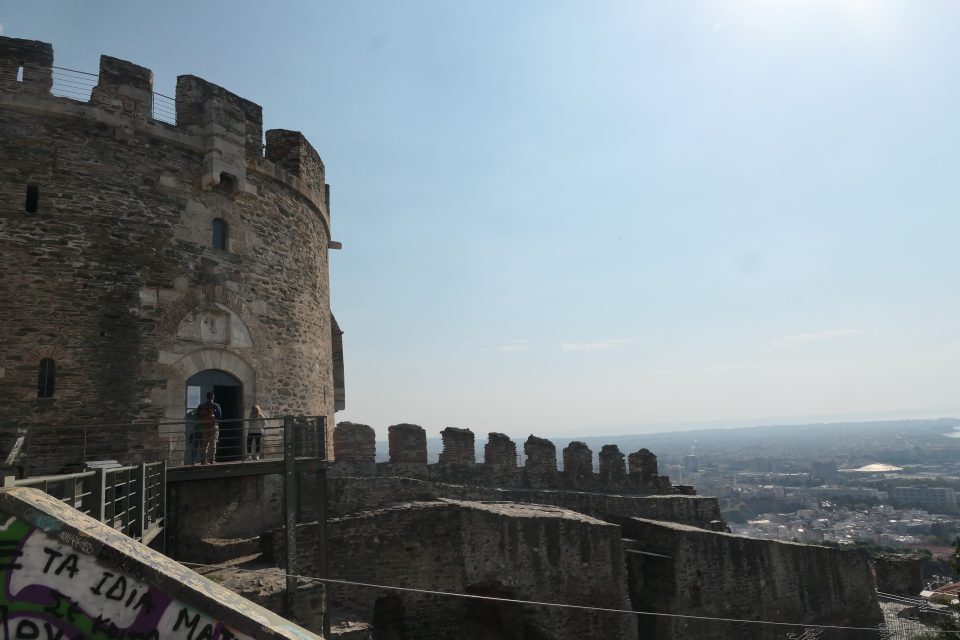
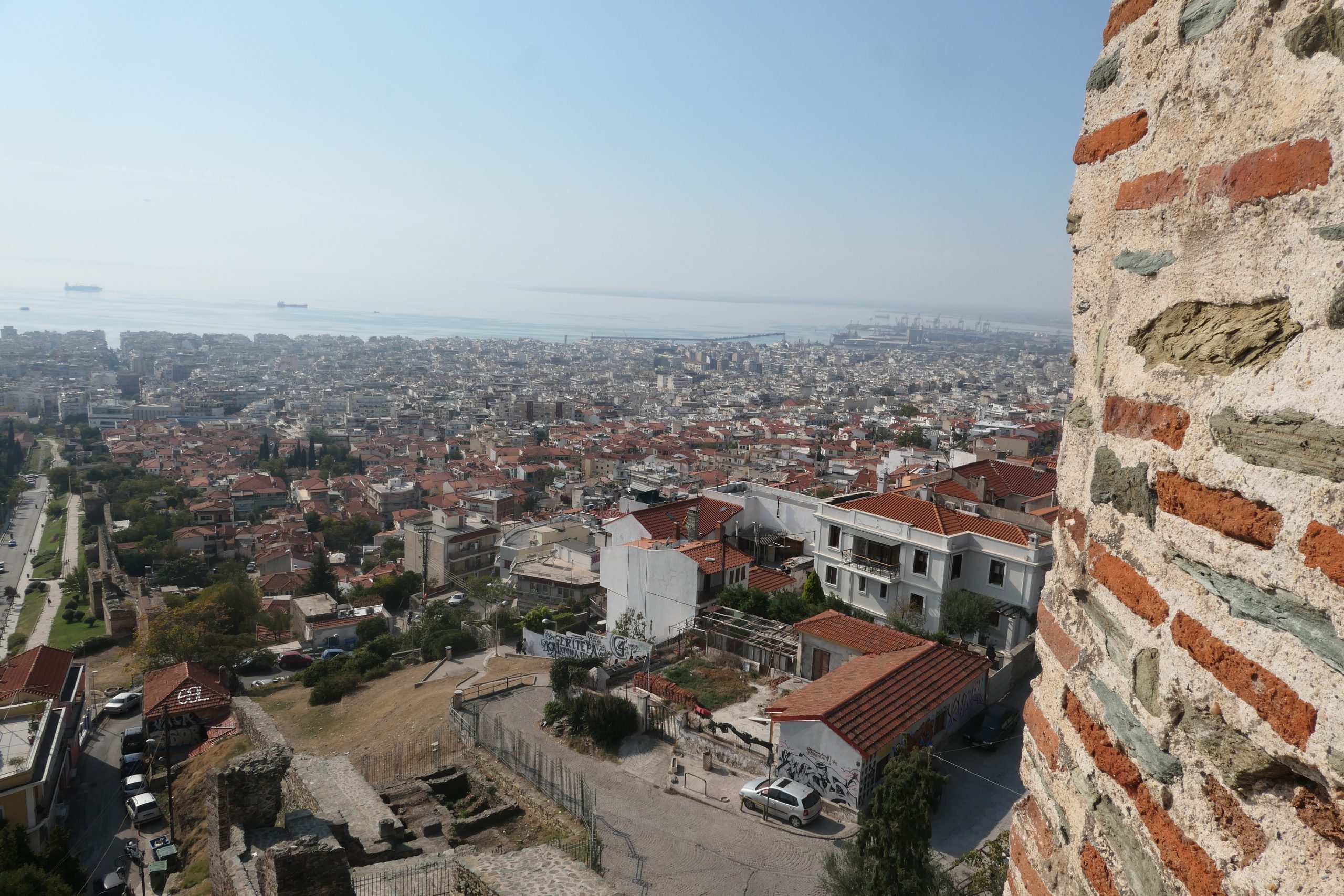
From above, we noticed that you can walk along the city walls, and it brings you down very near to Aristotle University – the site of the Old Jewish Cemetery memorial. So we walked the couple of kilometers downhill, and entered the university. It was a collection of buildings like Tel Aviv University, but the grounds were not as nicely manicured.
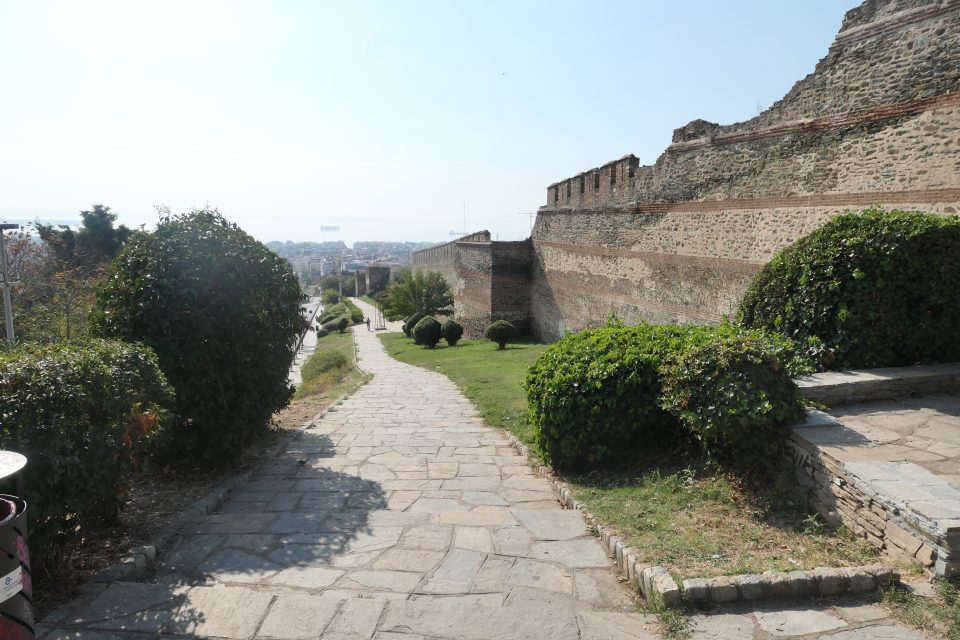
We found the memorial situated at the top of a small rise. No words necessary.
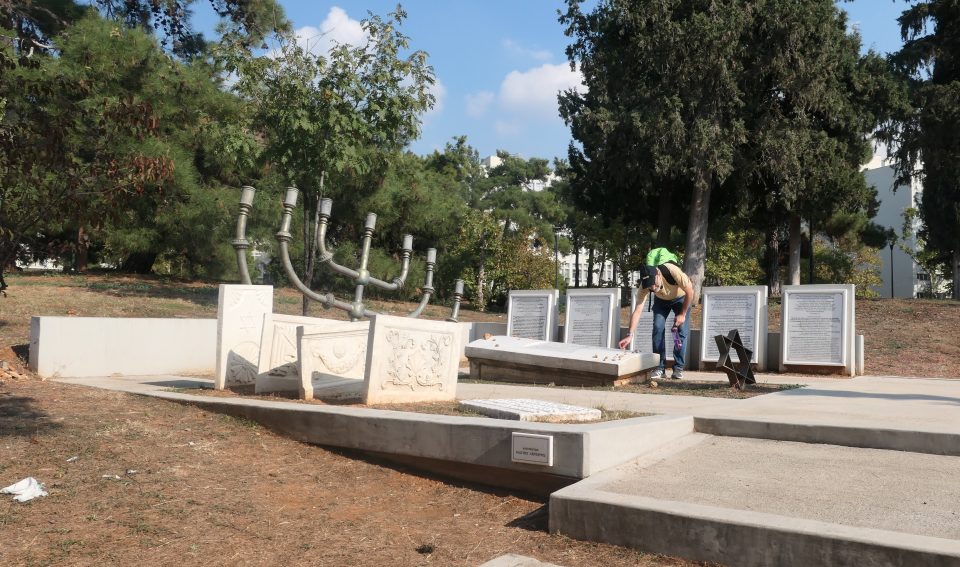
Although it was still pretty early, we decided to head towards the one and only kosher restaurant in Thessaloniki for dinner. It was on the other side of the waterfront and along the way, we passed the Arch of Galerius and Rotunda, impressive 4th century monuments.
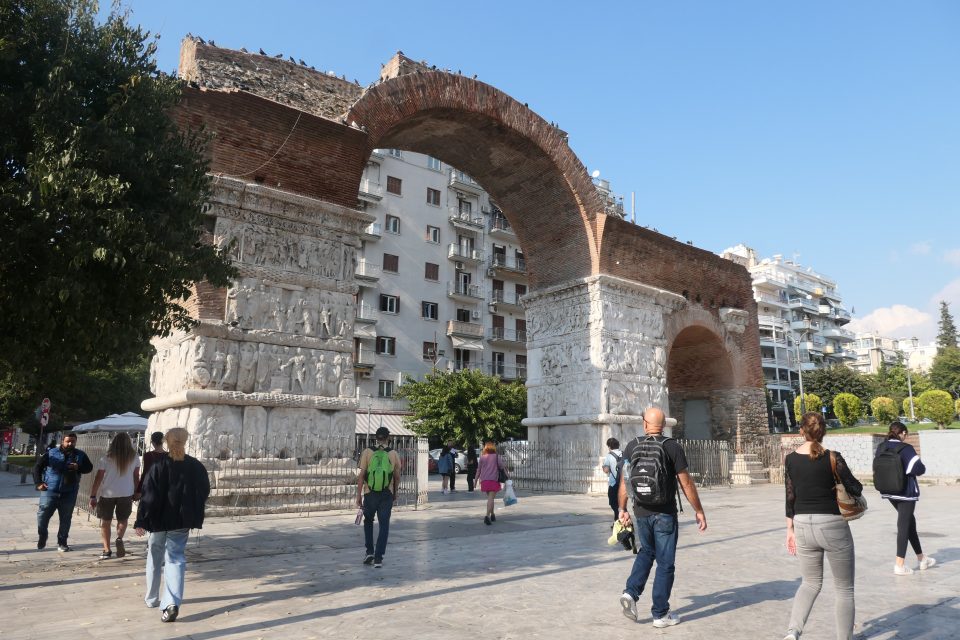
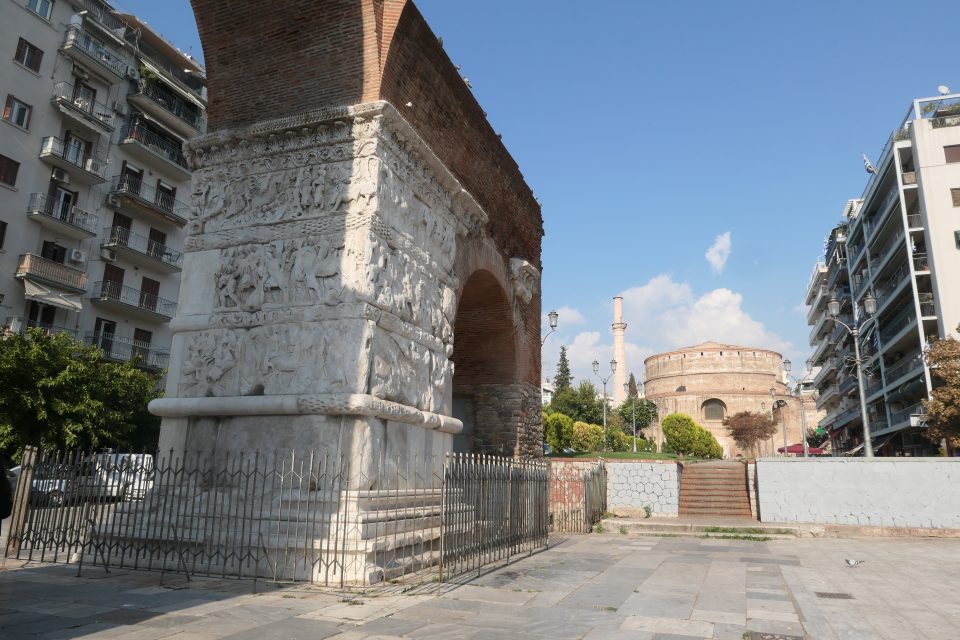
In general, Thessaloniki is a very easy city to navigate. Mostly flat, not too large, and well signposted in both Greek and English. After one day, we could already mostly find our way without Google Maps.
The restaurant is right off Aristotelous square and this time we were able to take a photo of the Aristotle statue. I was curious to know the connection between Aristotle and Thessaloniki – why is so much named after him? The square, the university. Turns out Aristotle was born in Ancient Stagira, only 55km outside of Thessaloniki.
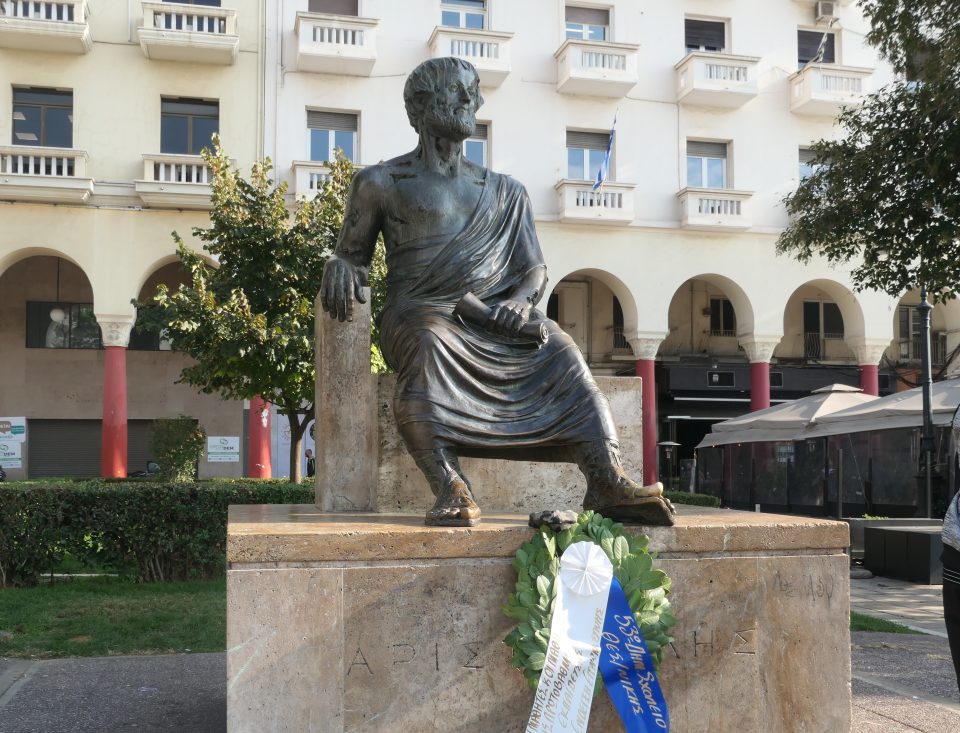
At the restaurant, the first thing they asked is if we made reservations. That gave us the idea to make reservations for later on in the day – we weren’t quite ready for dinner yet. We decided that we would return here after Mark finished evening prayers.
We remembered that today was the last day possible to do grocery shopping for Shabbat food, so our next destination was a grocery store on the way home. We picked up a few fruits and vegetables and continued to our apartment.
At home I rested (means worked on the blog) until it was time to return to the restaurant. When we arrived, we were the only ones in the whole large restaurant. Reservations were not necessary. The food was surprisingly excellent.
We left the restaurant a little after 20:00. The streets were full, full of people, even more than during the day. The outdoor seating at the many restaurants was packed. In all – a very happy atmosphere.
As we passed Aristotelous square, there was an information sign about the square that we had not noticed before. The square is enclosed by two beautiful buildings, one is the Olympion cinema and the other is the 5-star Electra Palace hotel. From the sign, we learned the Jewish connection to both buildings. The cinema building was designed by the Jewish architect Jacques Moshe and the hotel was originally the Alliance Israélite Universelle – a place for higher education for the Jewish community.
That is Thessaloniki – it’s Jewish history intertwined with so much of the modern-day city. Just like you walk around and stumble upon Roman relics around every corner, the Jewish relics are also everywhere. Memorials to the vibrant Jewish community that once lived here.
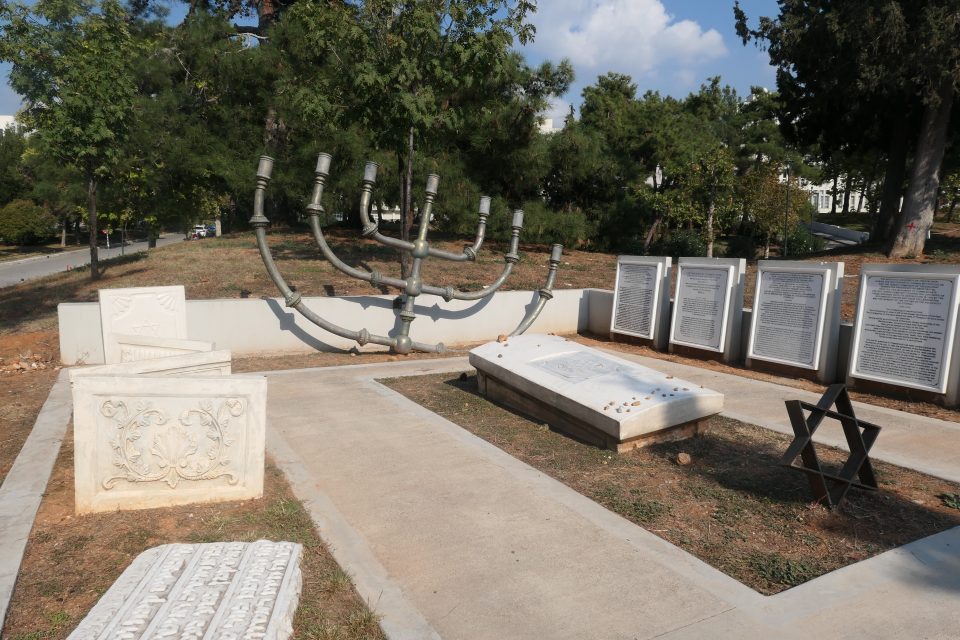
“Just like you walk around and stumble upon Roman relics around every corner, the Jewish relics are also everywhere” interesting and surprising